Behind the scenes at a pet crematorium
They’re the ‘angels’ helping usher our pets over the Rainbow Bridge. Now a behind-the-scenes look at a Queensland pet crematorium reveals how the process happens and why pet owners can trust a promise of individual cremation.
QWeekend
Don't miss out on the headlines from QWeekend. Followed categories will be added to My News.
In the back blocks of a Gold Coast industrial estate, a group of “angels” work their magic, helping usher pets for the final part of their journey over the rainbow bridge.
The recently deceased pets arrive on stretchers with flowers between their paws after being carried from their homes by “paw-bearers”.
The business of pet cremation has soared in recent years but it is the dignified and sensitive approach of Gold Coast and Brisbane-based business Pet Angel that has owners flooding them with thank you cards and gifts in the wake of their darkest hours.
WARNING: CONFRONTING CONTENT BELOW
But those final days of a loved pet’s physical existence at a crematorium are largely unknown.
Where are the animals kept?
Are they looked after?
How do you know for sure it is your pet’s ashes that you get back?
And what happens during the cremation process?
A recent behind-the-scenes visit to Pet Angel’s Molendinar crematorium reveals the morbidly fascinating reality.
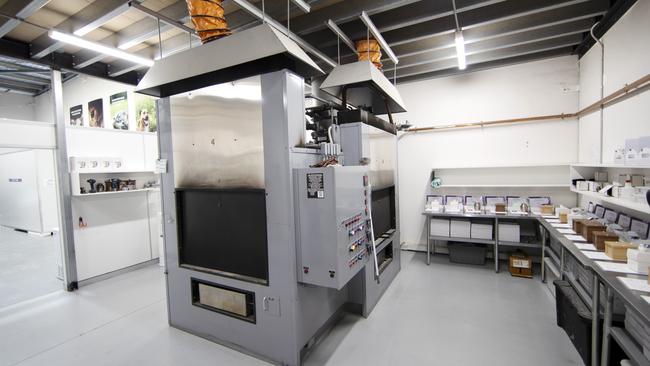
Pet Angel founder, Sorrento’s Tom Jorgensen was a builder until five years ago when, at nearly 64, he decided to take the leap into pet cremation, spurred on by his own dog’s death and a heartbreaking moment he witnessed outside a veterinary surgery.
“I was standing on a building site next to a vet’s and I saw a lady carrying a dead dog out in a plastic bag, crying,” he says.
“And I had a really bad experience with my dog … I never got the ashes. My dad was a vet and I just thought ‘we could do it a lot better’.”
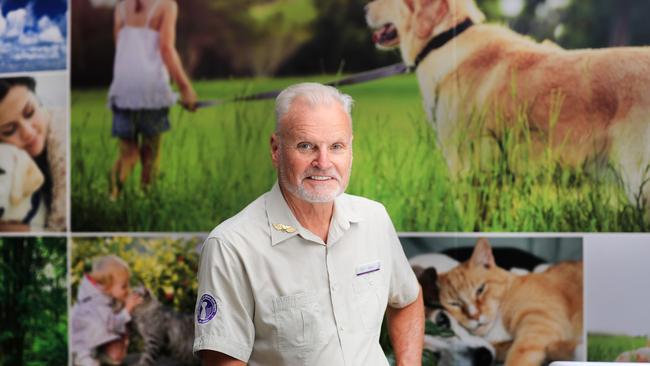
Joined by his nephew Scott Gunnell, 37, of Sorrento – who was working as a boat builder – they researched existing crematoriums and established their own but readily admit they “lost money for the first 3.5 years” after hitting brick walls convincing vets to switch to using their business.
Then came the pair’s light bulb moment.

As pet owners increasingly turned away from the sterile surroundings of a vet surgery in favour of home euthanasia, the pair changed strategy to provide home collections of deceased pets.
Before they knew it, their business was rapidly growing as word of mouth spread.
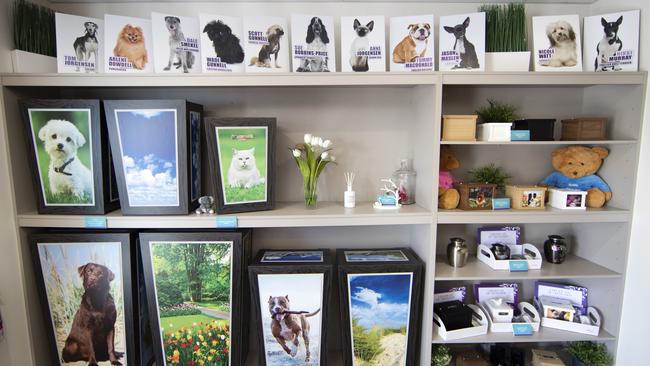
Now they are cremating more than 800 pets a month, with 20 per cent coming from the public and 80 per cent coming from vet surgeries as owners increasingly request their service.
About 60 per cent of the animals they cremate are dogs, 35 per cent cats and the rest can be anything from guinea pigs, alpacas, water dragons, snakes, rats, rabbits, birds, chickens and even fish.
It is the promise of an individual cremation – ensuring the returned ashes are only those of the beloved pet – and the dignified and strict procedures that Pet Angel operates under that has led to their success.
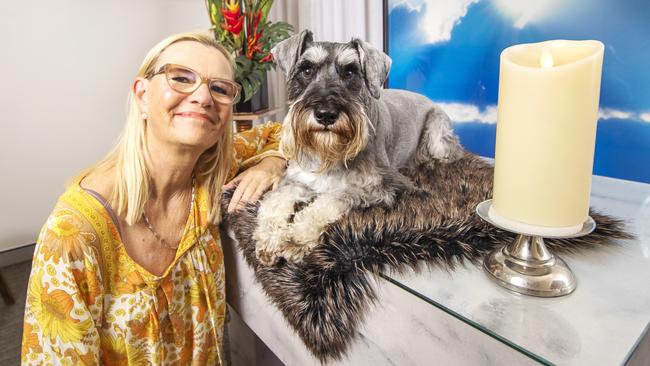
“If you’re a pet lover, you put yourself in that situation,” says Jorgensen as he describes how the Pet Angel team approaches the very difficult “home collections”.
Often there are teary adults and heartbroken children standing around their dog who may have died suddenly. Others are angry, while some show little emotion.
“We get the extremes of grief – anger, abuse, we’ve seen it all,” Jorgensen says.
“We get people who can’t let them go and people who bring the pet out in a VB box and hand it over.
“We see big, muscular men devastated over losing a little Maltese … seeing kids and the elderly lose their pets is the hardest.”
Whatever the situation, sensitivity is key.
“We go to the door without anything, we don’t take payment upfront. We introduce ourselves, go in and sit and talk to the owners, pat the pet and talk about what happened … generally you just be a lovely human,” says Jorgensen.
They refer to the pet by name and when the family is ready, they get a stretcher or basket out of the pet-version of a hearse, place a flower between their paws, ask the family if they want the honour of being pallbearers, give them time to say their final goodbyes at the van and then they drive off very slowly as a sign of respect.
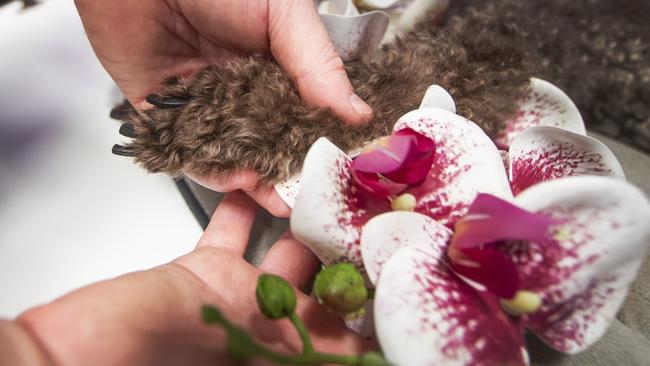
The pick-ups can turn bizarre though.
Gunnell recalls an owner once requested that he stay with the deceased dog and watch the first half of a State of Origin game because the owner wanted that last experience with his pet.
Another time, a Russian couple had him doing vodka shots with them as a final send-off to their pet.

In a spine-tingling moment, one person brought their (still well and truly alive) dog to the crematorium to meet Jorgensen and the team before they took him to be euthanased.
“That one sticks in my mind, I still get goosebumps thinking about that,” he says with a shudder.
At Pet Angel HQ, a Remembrance Room is set up like a funeral parlour where grieving owners hold services for their beloved pets.
There’s a lectern and rows of seats, a TV for photo slide shows and a table where the pet is laid on a rug.
They’ve had everything from Maori families doing the haka and an Indian couple burning incense to a Japanese couple arranging a beautiful casket filled with flowers.
“The (Indian) couple burnt about 700 sticks of incense,” Jorgensen laughs as he coughs at the memory.

Inside the Remembrance Room, if the family requests it, a window opens out to look on to the crematorium floor where they can witness their pet going into the cremator.
“Some people like to see their pet go in alone with their own eyes because they don’t trust the industry that they’re cremated individually,” Jorgensen says.
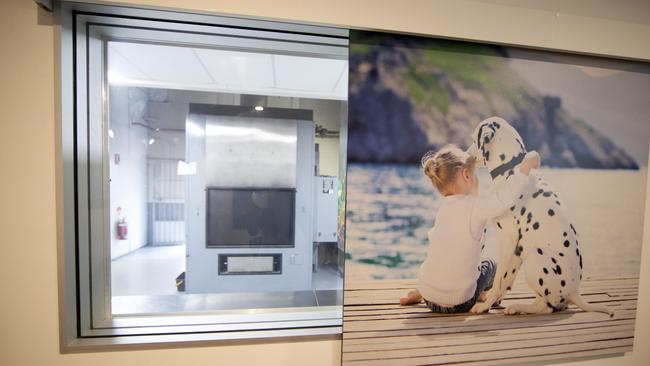
It’s the promise of individual cremation that Jorgensen takes so seriously.
The crematorium operates almost exactly like a human crematorium with multiple safeguards in place to ensure pets aren’t mixed up.
Upon arrival, a stainless-steel tag is attached to the pet’s leg before it is wrapped in a body bag with their documentation papers and put in the refrigerated mortuary.
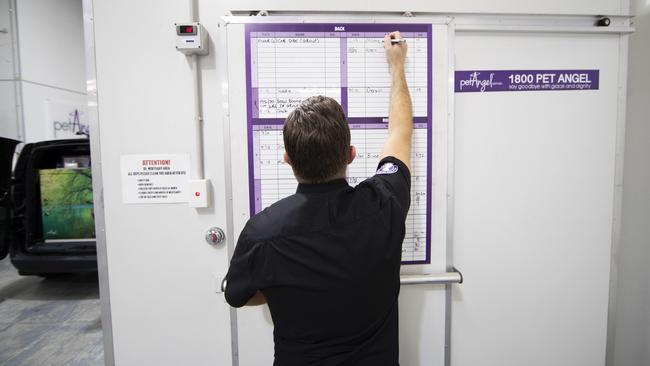
On the door of the mortuary, a board lists the full names of each pet.
When it comes time for cremation, a paw print is taken on a special card for the family and a lock of fur/hair is cut and put in the keepsake box that’ll soon also include the urn filled with ashes.
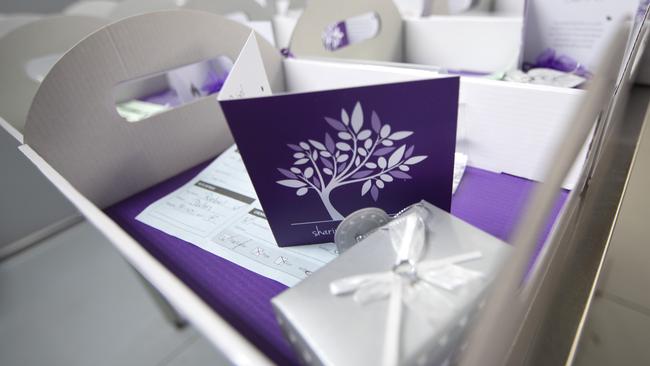
Jorgensen’s other nephew Wade Gunnell, 34, of Benowa, is the cremation manager and he wanders around patting and chatting to the pet – calling it by name – as he prepares to transfer it into one of two huge cremators – each with three individual chambers.
Some owners will request pets are cremated with their favourite toys, others have food and flowers.
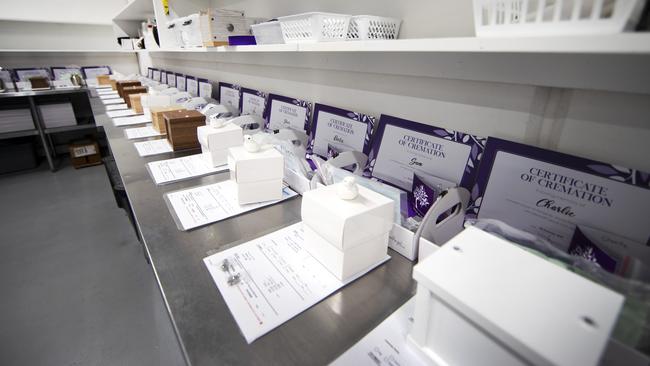
All police dogs are cremated at Pet Angel and they have a send-off fit for their public service duty – their custom urns wrapped in an Australian flag image with their photo and badge number.
The stainless-steel tag that is attached to the pet’s leg is removed and hung outside of the chamber along with the paperwork – a double precaution to ensure there is no identity mix up.
Inside the chamber a huge jet flame works quickly, reducing the pet to bone and ashes.
The cremator reaches up to 1126C.
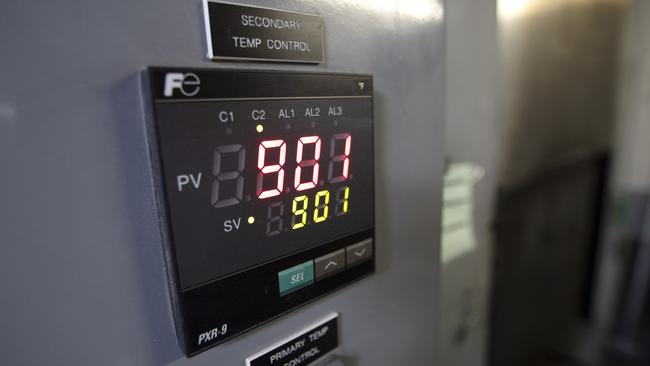
Large dogs are the first cabs off the rank each morning and take about two hours to complete cremation.
After that, the searing hot chambers work quickly, medium dogs take about 20-25 minutes to cremate while cats take a very quick 10-15 minutes.

The ash and bones are raked out into a tray and the corners of the chamber are swept out to ensure all the ashes are captured. Pins and other evidence of surgery remain intact, with some owners asking for them back.
The identification tags are moved down to the tray where the ashes cool for about 15 minutes before being moved to an ash processing machine that grinds the remaining bones down to a fine ash.
A 29kg dog is reduced to just a 600g bag of ash.
The bagged ashes are marked with the pet’s name and the identification tags follow the ashes wherever they go.
“It is checked five or six times,” says Jorgensen. “We cannot make mistakes in this industry.”
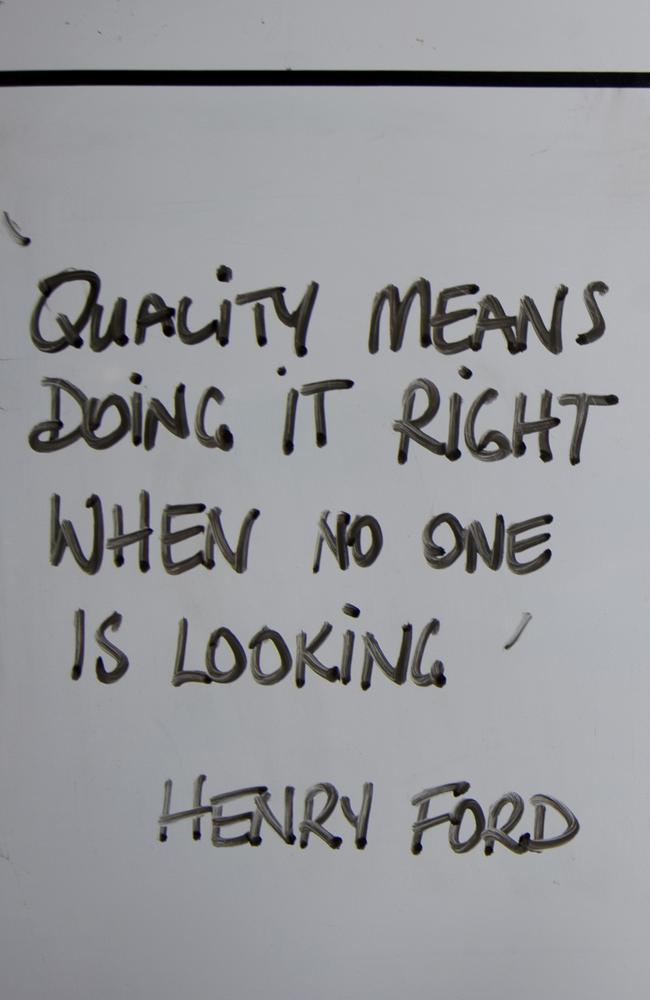
Wade Gunnell will cremate more than 20 pets a day – and another 20 will be processed in the Brisbane crematorium.
It’s a busy juggling act as he simultaneously manages the delicate timeframes required for each of the pets in the six individual chambers.
If he leaves a pet in for too long, there’ll be too little left of the animal.
Despite the morbid nature of the job, he never loses sight of his extremely important duty to farewell a pet with the dignity they deserve after giving a lifetime of unconditional love.
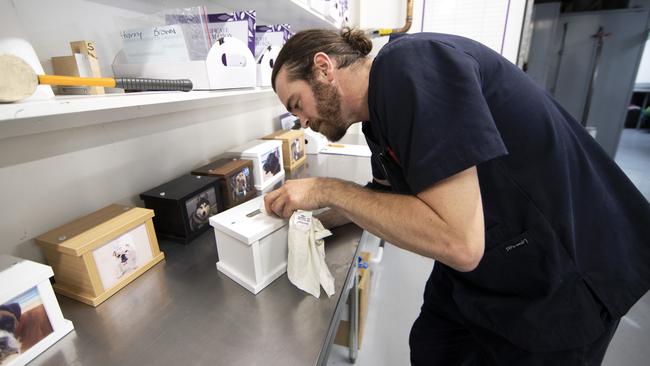
There are custom urns, coffins, teddy bears and lockets that allow fur-parents to customise the final resting place of their pet.
However, the majority choose wooden urns made by Pet Angel that are personalised with favourite photos of the pet printed on each side and a laser-engraved plate with the pet’s name – all of which are produced on site.
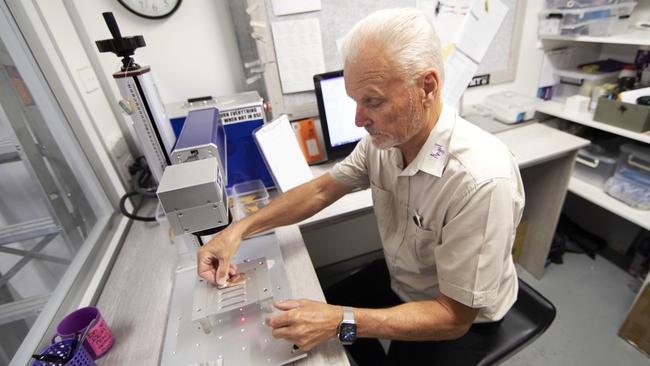

For owners who don’t want their pet back, Pet Angel also saves them from the previous vet option of a less dignified disposal at the rubbish dump by cremating groups together.
The ashes are then scattered on a mountain at Jorgensen’s northern NSW property, Eden Ridge Farm.

The crematorium also has a room of unclaimed ashes.
Most owners pick their fur-baby up but there are some that Pet Angel have kept for more than two years – hoping the owner will one day return.
“Some people haven’t had enough money or can’t bring themselves to pick them up and they’ve said to us, ‘Can you please look after my pet until I’m ready?’,” Jorgensen says.
“And we’ll do that.”
Then there’s the goodwill work.
Just a few weeks ago, a cat died in a house fire at Ashmore and Pet Angel cremated it free of charge for the distraught owner.

When it comes to why he willingly surrounds himself with heartbreak every day, Jorgensen simply says, “I don’t know how we handle it.
“You know you are helping people at the end of the day by giving their pet dignity and respect,” he says.
“When you build a house, people don’t ring you saying, ‘Gee this is a great house’, they ring saying the door handle fell off … but here, people ring you up and say ‘thank you’.
“You know you are doing something good for other people in their time of grief.”
And the sea of thank you cards and notes pinned to the wall just past the front entrance is evidence of that.





